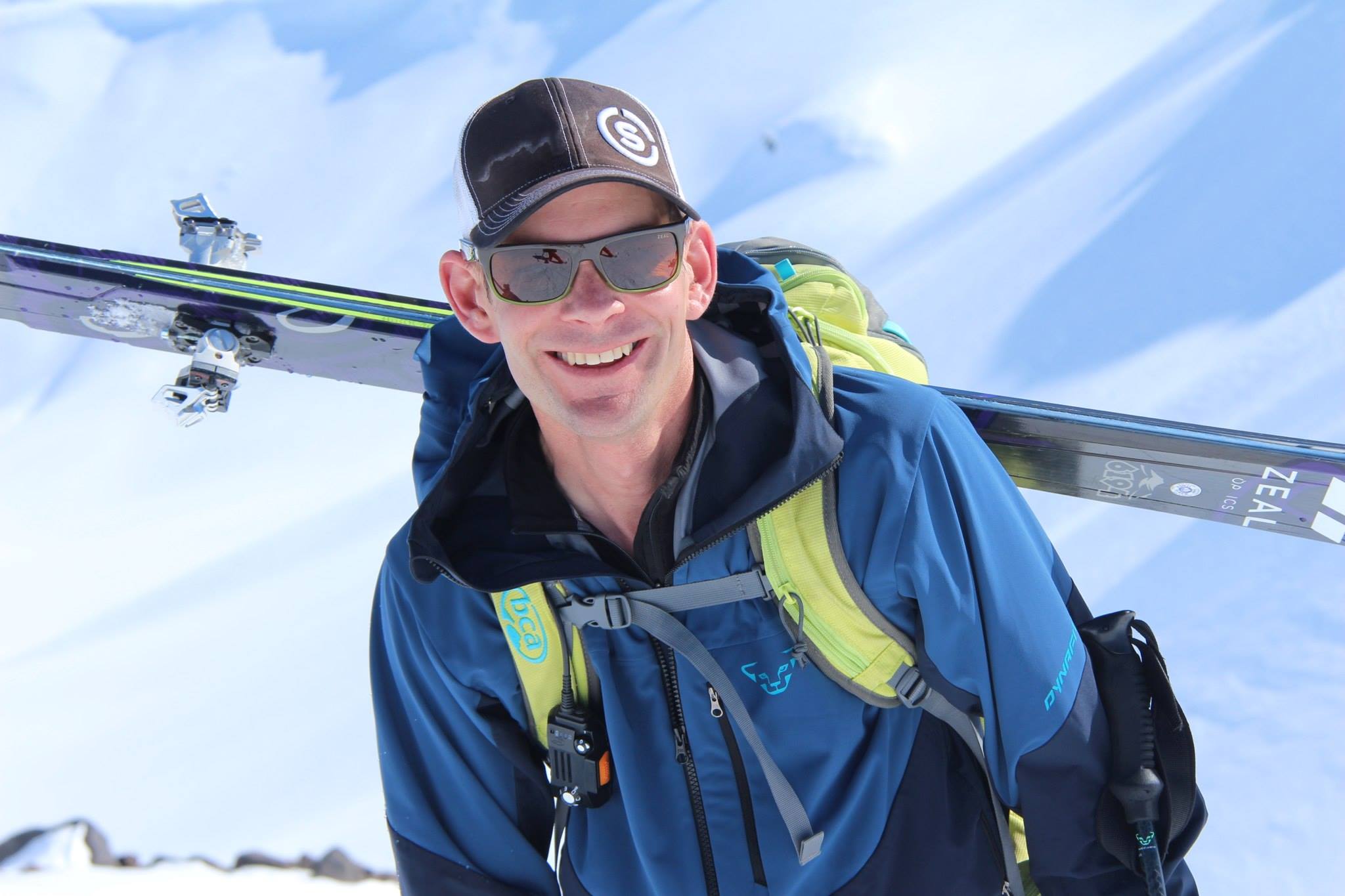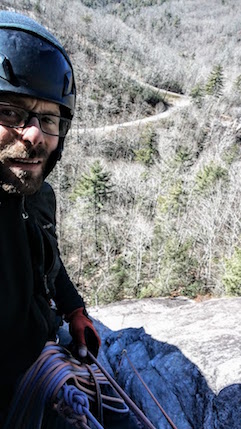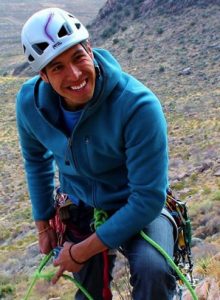Yoga for Guides

By Richard Parker, Rock Instructor & Certified Kripalu Yoga Instructor
A big part of managing life as a professional guide is staying healthy (mind, body, and spirit) to meet the demands of the work. Keeping the body flexible, balanced, and strong is generally not too tough for those in their 20’s. As folks move into their 30’s, 40’s, 50’s, and 60’s, having an excellent program for strength and flexibility, injury prevention, and recovery becomes increasingly more critical. Yoga is a great way to keep you biologically young for decades, as well as help with stress reduction and with cultivating serenity, acceptance, and kindness.
Yoga…small “y”…large “Y”: Most people think of yoga (small “y”) as a series of postures (known as asanas) linked with breath that increase flexibility and strength and aid in managing stress. Yoga (capital “Y”) is an ancient system with ethics, breathing disciplines, and meditation techniques designed to advance one’s spiritual journey. Within the practice of Yoga, asanas play an important but secondary role. This post focuses on the physical practice and its specific benefits for guides. A subsequent article will expand to include discussion of breath work, meditation, and other possible benefits of Yoga.
Guiding produces specific and repeated motions that can lead to imbalance, injury, and reduction in the range of motion (ROM). Shortened hamstrings and restricted hips from repeated stepping upward (climbing, skinning, and approaching), drooping and rounded shoulders and rounded upper back from carrying heavy loads, painful elbows, wrists, and fingers from too much crimping, moving rope, and hanging on to ice axes while placing screws, strained necks from looking down (or up) and coaching while belaying, tweaky lower backs from leaning forward in skiing and sliding into poor posture as the long day of work extends…this is just a start to a list that I am certain many of us could easily add to.
I have yet to meet someone who said, “it sure would be great if I could be more tight!” As we teach our clients every time we guide, efficient movement and technique is crucial in technical terrain, and flexibility is a key to this. We are all looking for flexibility because flexible muscles are strong, resilient, and provide our joints with a full ROM, and, yes, tight muscles are the opposite: weak, vulnerable, and limit the ROM. Stretching while breathing mindfully not only lengthens muscles and makes them supple, it is also helps muscles recover from stress by increasing blood flow. A key to asana practice is not to force muscles to lengthen, not to use one muscle group against another but to relax, breathe, and allow the muscles to open. Attempts to push generally lead to injury or stagnation.
By stretching specific muscle groups in a systematic and balanced way, a regular asana practice can effectively help avoid or diminish the effects of repeated stress and imbalance. I look for heart opening poses and back bends to address tight shoulders and lumbar compression, hip openers like lunges and pigeon pose to address tight hamstrings, psoas, hip flexors, quadriceps, and calves, arch stretches for stressed feet, chaturangas (low push up) and hand/arm balances to add some pushing to counter the pulling that dominates climbing and moving rope, inversions to help the legs flush out toxins and allow for easy lymphatic fluid return, core exercises to strengthen the muscles that support all motion and especially the lower back, and very careful attention to the neck to address “belayer’s neck”. I also add balancing poses to bolster this key skill and exercise the proprioceptive (body awareness) sense of feet, ankles and legs, etc.
American Mountain Guide and Instructor Pool member Art Mooney has been a proponent of Yoga for many years: “My practice of yoga began over ten years ago. At that time I found myself feeling sore, overall stiffness, and injured at times. I needed flexibility and thought yoga would help. Yoga was originally intended to increase my overall flexibility which would reduce injuries. Since then I have found a consistent practice of yoga offers many other benefits. Flexibility is certainly one big benefit, but I also noticed my focus, power, breathing, and alignment all improved. With all these yoga benefits I am much more in tune with my physical body and I have taken climbing/guiding movements to a higher level. As a working mountain guide, yoga helps me wind down from a tough day or multiple days at work. The practice of centering and leaving all the guiding work and business behind is truly the way to clear and refresh the mind. After a yoga practice I feel refreshed and ready for another day in the mountains.”
What is the best way to get started? Find a certified and experienced teacher, and my bias would be to look for a teacher with an athletic background who understands the physical demands of your work. Take your time in finding a teacher and a style that suits you. It is important to learn the basics from a teacher to avoid injury, and injuries come easily to beginners, especially when one brings a competitive attitude and one chooses an aggressive style of asana practice. Once you have learned how to safely and effectively practice, it can be time to shift more to a home practice, which saves money, makes it easier to squeeze in a practice, and you can be guided specifically by what you need as opposed to what a teacher is offering on a given day. To see true gains in flexibility, try to commit to at least 2-3 sessions a week (daily is best), even if these sessions are at home (or while camping!) with a book or a video for 10-20 minutes at a time.
Noted Yoga teacher Erich Shiffman said, “Yoga creates symmetry through your whole body, making you strong and flexible in a balanced way. It also teaches you to balance the mental impulse to push, control, and be assertive with the complementary impulse to yield, surrender and be passive.” Try to avoid thinking of asana practice as a time to gain strength, and focus on the flexibility, balancing, and recovery benefits. This does not mean that there are not some opportunities to enhance strength through asanas, but specifically work on strength for climbing elsewhere.
Thanks to Richard Parker for this piece introducing the benefits of yoga for professional guides. A climbing guide since 1977, Richard is a certified Rock Instructor and certified Kripalu Yoga Teacher. In the next installment look for discussion of the benefits beyond the physical and for specifics about breathing exercises (pranayama) and meditation. In addition, I will provide guidance on how to build your own, balanced asana practice to do at home. In the meantime consider using the transition between the fall and winter to get started by taking some classes and establishing a regular routine. Feel free to be in touch if I can be of any help: [email protected].












